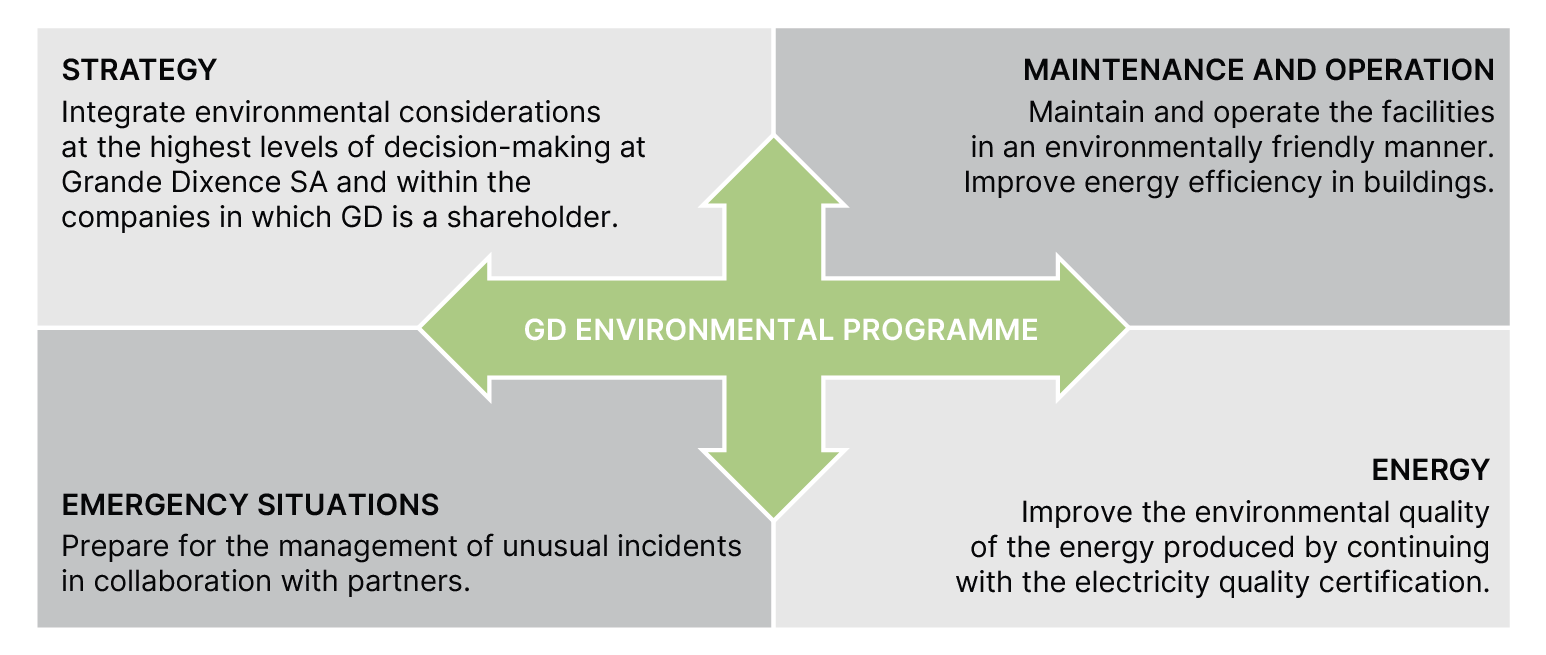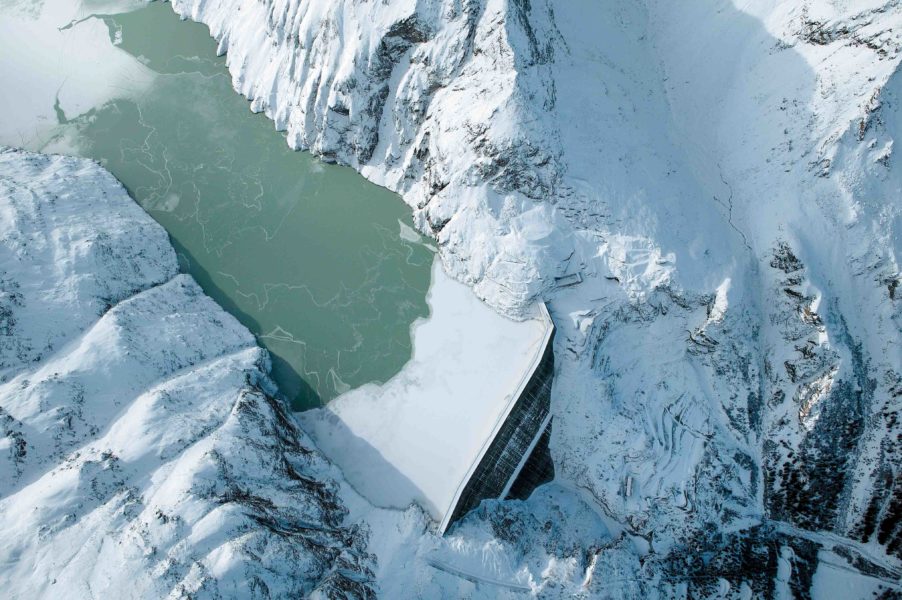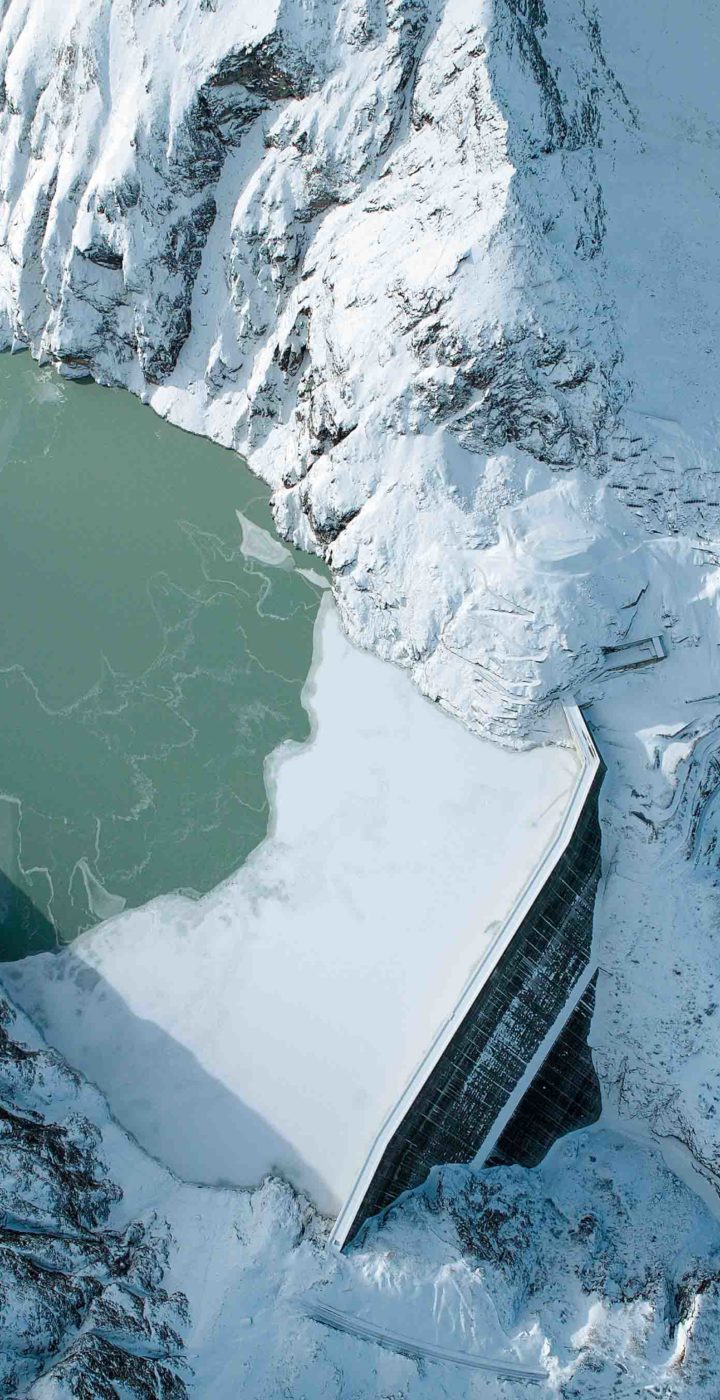Ecology
Environmental policy
In the current battle against climate change, the energy produced by Grande Dixence (GD), which is particularly low in CO2, has enormous potential. With this in mind, Grande Dixence SA recognises the importance of the environment and continues to maintain and improve its production tools to maximise its use of natural resources. For this purpose, it undertakes in particular to:
- comply with the legal requirements and the provisions of the concessions and authorisations;
- ensure that its infrastructures are operated in a way that minimises the impact on watercourses and their ecosystems (purges, etc.) and prevents pollution;
- minimise the environmental impact of its work;
- exert its influence as a shareholder on the behaviour and environmental control of the companies in which it has a financial interest;
- maintain constructive communication with its partners, the general public, and the communities affected by its facilities;
- foster collaboration with environmentally conscious suppliers and service providers;
- enhance the environmental qualities of hydroelectric power;
- continue to apply its energy-saving concept to its buildings;
- continuously improve its environmental performance through action programmes and performance indicators.
Purges
The Z’Mutt and Ferpècle compensating basins are purged yearly to remove the sediment build-up. These purges are subject to strict cantonal requirements that specify the duration, flow rate and suspended solids limit. The authorities are informed about these operations. They are closely monitored.
The Z’Mutt (Mattertal) and Ferpècle (Hérens) compensating basins were purged from 5 to 7 August and on 26 July, respectively. Grande Dixence SA applies the purging procedures in accordance with the cantonal legal requirements meticulously to minimise the environmental impact.
Measurements taken at various points downstream of the basins in 2022 confirmed that the legal limit levels were respected during these purging operations.
Certification / monitoring audit
Grande Dixence SA’s environmental management system has been ISO 14001 certified since 2001. It enables the company to:
- identify and manage important environmental factors and their associated impact;
- analyse and manage environmental legislation;
- monitor environmental results over time;
- continuously improve environmental performance;
- spread awareness about the environmental concept both internally and externally;
- deal with emergencies and manage environmental risks.
The ISO 14001 certification was renewed by an accredited body in 2022 for three years based on the new standards that came into force in 2017.
naturemade basic is a quality label that identifies energy from renewable sources. In 2022, Grande Dixence SA renewed the certification of this label for five years. It should be noted that the energy produced by the Grande Dixence water turbines at Fionnay and Nendaz (Grande Dixence) and Bieudron (Cleuson-Dixence) has been fully naturemade basic-certified since 2012.
Action programme
Grande Dixence SA has devised a specific programme to implement its environmental policy. It is as follows:

Certificates and labels
Certification
The ISO 55001 standard sets out the requirements for an asset management system within the context of the organisation. Alpiq AG was ISO 55001-certified in 2015.
The Grande Dixence management participated in the annual audit in this respect.
Labels
The table below shows the labels and certificates currently awarded to Grande Dixence SA:
| Labels and certificates | NATUREMADE BASIC | ISO 14001 |
|---|---|---|
| Certified objects | Production at the GD Fionnay and Nendaz plants and the CD Bieudron plant | The Grande Dixence SA environmental management system |
| Recognition | Switzerland | World |
| Validity | 5 years, with an annual control audit | 3 years, with an annual control audit |
Safety and awareness
Rivers downstream of the dams, water catchments and hydroelectric power stations can be dangerous. Sluicing and the discharge of water is carried out on a regular basis, especially in summer, causing sudden rises of the water levels. Islands, gravel banks and riverbanks can quickly become submerged.
Since 2007, in order to reinforce the existing information to the users of the footpaths, announcements have been made in the regional media (press, radio, posters in public transport and applications for smartphones). In addition, students are hired to warn walkers in the field.


